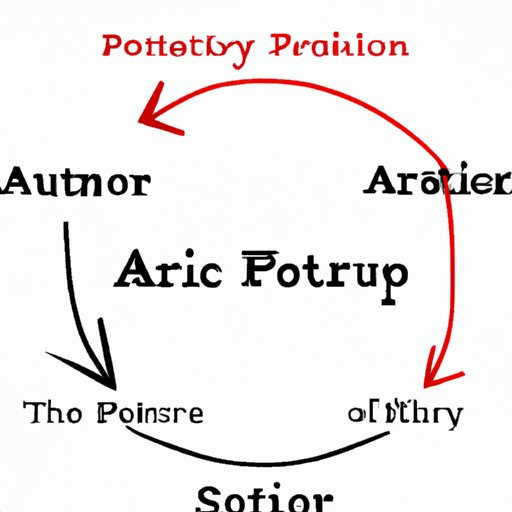I. Introduction
Plot is a crucial element in any work of fiction. From novels to short stories to screenplays, plot sets the foundation for the story and drives it forward. In simple terms, plot refers to the events that make up a story. Plot is what keeps readers engaged and can make or break a story. In this ultimate guide to understanding plot, we will explore everything you need to know about crafting engaging fictional narratives.
II. The Ultimate Guide to Understanding Plot: Everything You Need to Know
The first step in mastering plot is understanding its definition and function in fiction. Plot is essentially a sequence of events that unfold in a story. It sets the stage for the action, introduces the characters, and drives the story forward. The function of plot in fiction is to create a sense of intrigue and keep the reader engaged from beginning to end.
The five essential elements of plot are exposition, rising action, climax, falling action, and resolution. Exposition refers to the introduction of the story’s characters, setting, and background information. The rising action is the sequence of events that lead up to the story’s climax. The climax is the turning point of the story, the moment of highest tension and conflict. The falling action is where the consequences of the climax begin to unfold. And the resolution is the final outcome of the story’s conflicts and events.
When it comes to storytelling, plot is closely related to other techniques like characterization, setting, and theme. Properly executed, these elements help to create a cohesive narrative that is engaging and satisfying for readers.
III. Plot Mechanics: How to Craft Compelling Stories That Keep Readers Hooked
One of the keys to crafting a successful plot is creating tension and conflict. Conflict is the engine that drives your story, and it comes in many forms, including internal vs. external conflict, and character conflict vs. setting conflict. To build tension, writers can use a variety of techniques, including foreshadowing, suspense, and cliffhangers. Pacing is also an important consideration, as it affects the momentum of the story and can make or break its impact.
IV. Plot 101: A Beginner’s Guide to Understanding the Building Blocks of Fiction
Another essential component of crafting a successful plot is structure. Narrative structure refers to the way in which a story is organized and presented to the reader. The most common types of narrative structures include linear (chronological), non-linear (flashback and flash-forward), and frame narratives. To ensure a cohesive narrative, writers can use outlining, storyboarding, and other techniques to keep track of their plot’s various threads and events.
V. The Art of Plotting: Mastering the Structure and Arcs of Successful Narratives
Plot arcs are another key component of crafting a compelling narrative. Plot arcs refer to the overall journey of the protagonist and how the story develops over time. Character arcs, in particular, are essential to creating dynamic characters who change and grow over the course of the story. Successful plot arcs often follow common archetypes, including the hero’s journey and the three-act structure. To develop strong plot arcs, writers can use techniques like storyboarding, character mapping, and outlining.
VI. From Inciting Incident to Climactic Resolution: Demystifying the Elements of Plot
As we’ve seen, plot development relies on a careful balance of the different components of storytelling. The inciting incident is the moment that sets the story in motion, and the resolution is the satisfying conclusion to the story’s conflicts and events. Between these two points, writers must carefully build tension and convey the sequence of events that lead to the story’s climax. Techniques like pacing, foreshadowing, and character development are all essential in creating a story that engages the reader and builds to a satisfying resolution.
VII. Plotting for Success: Tips and Techniques for Crafting Memorable and Engaging Stories
As with any aspect of writing, plot development has its own set of challenges. Writer’s block, plot holes, and sagging storylines can all derail your plot and undermine the reader’s engagement. To overcome these challenges, writers must be willing to revise and rework their plots as needed. Techniques like outlining and revising can help catch any weak spots in the plot and ensure that it delivers the intended impact. Keeping readers engaged also involves pacing and tension building tactics. To find true writing success, it’s important to know the plot inside and out.
VIII. Conclusion
Crafting a memorable plot is an essential part of writing successful fiction. By understanding the key components of plot and narrative structure, writers can create engaging stories that keep readers hooked from beginning to end. From creating compelling characters to building tension and conflict, crafting a strong plot requires a careful balancing of many different factors. With patience, practice, and attention to detail, any writer can master the art of plot and craft a story that captivates readers and captures their imagination.
